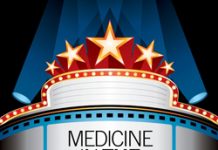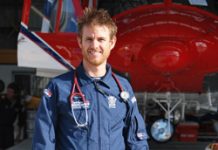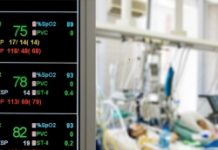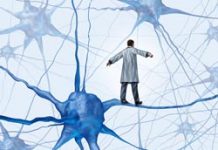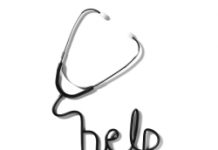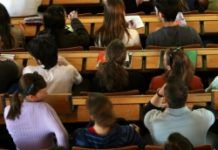 Forget those late nights on the wards grappling with real patients to perfect taking a history for the MRCP – medical training is going virtual. Second Life, the online 3D world, is set to become the world’s largest medical training institution and, as Bertalan Meskó reports, it could change the way we view education entirely.
Forget those late nights on the wards grappling with real patients to perfect taking a history for the MRCP – medical training is going virtual. Second Life, the online 3D world, is set to become the world’s largest medical training institution and, as Bertalan Meskó reports, it could change the way we view education entirely.
Second Life is an online virtual world, a bit like a computer game where you play the lead character. Since it was opened to the public in 2003 it has grown explosively to more than 10 million ‘residents’. The main benefit of Second Life is that it makes it easier to communicate with people from around the world and to use videos, images, texts and web links at the same time.
Until recently it was ruled by entertainment and casinos but now that gambling is forbidden Second Life has entered the golden age of education. The number of medical projects is growing rapidly benefiting from the ability to collaborate with people of the same field or interest from around the world.
Second Life makes working together on projects easy as you can create links between in-world activity and real-world information resources. If you’re a patient, you can find people coping with the same problems as you, meet them virtually, discuss your problems and listen to doctors attending Second Life’s world.
For doctors and medical students it makes it easier to educate with online presentations, tutorials and e-learning tools. You can do PubMed searches or browse among the many books of the virtual libraries.
Virtual Medical School
 One of the earliest projects is the Ann Myers Medical Center – a virtual medical school – where medical education gets a unique opportunity to find new ways of training medical students. It was created to test the possibilities of virtual training for real world medical and nursing students.
One of the earliest projects is the Ann Myers Medical Center – a virtual medical school – where medical education gets a unique opportunity to find new ways of training medical students. It was created to test the possibilities of virtual training for real world medical and nursing students.
There are dozens of physicians, medical students and animators behind this unique project who pledge their sparetime and money to this idea. AMMC currently has a voluntary staff consisting of consultant specialists, medical students and several nurses.
The founder, Doctor Ann Buchanan (Second Life name), a US physician, envisions a hospital where medical students and nurses could be trained.
Currently participants focus on patient history, physical examination and telemetry. A virtual mentor gives the students a disease process with which to familiarise themselves and they have to present it to the physician.
Teaching is a passion, DoctorAnn told JuniorDr as she discussed the project in Second Life.
“I went into medicine because I love to heal. The way medicine is, currently, physicians do not heal. I went into teaching because I love to open minds, but there again, my hands are somewhat tied – this allows me the avenue to both things I love and do them well,” she said.
Named after her mother, Ann Myers who has a brain tumour the main goals of AMMC include assisting trainee doctors to become more proficient in initial exam, history and examinations and in the analysis of MRIs, CTs and X-rays.
For example, a student can right click on an ECG machine and be taken to a page where they will have to accurately diagnose the medical complication.
AMMC also run training sessions for students and doctors. Recently on the 9th of August 2007 medical students from schools in the USA, Canada, Brazil, Germany and Hungary participated in a virtual event where they had to analyse a patient history, microscopic blood film and lab results in order to find out the proper diagnosis.
After formulating a differential diagnosis the trainee doctors met in a discussion group where a mentor asked questions about the medical condition and reasons for the differential.
Training Opportunities
Among the other educational opportunities in Second Life there’s the ‘Heart Murmur Sim’ where you can listen to cardiac murmurs, or the Virtual Neurological Education Centre which offers an online virtual environment for training and demonstrating neurological disorders.
One of the most comprehensive medical sites in Second Life is the Medical Library at Health Info Island which provides support, health information and a growing virtual community.
Play2Train is an area designed for training through interactive role playing with simulated cases like mass casualty accidents.
Both the Red Cross and the Center for Disease Control and Prevention both maintain a Second Life site. NHS London too, has it’s own hospital in Second Life.
Genetics Island
 One of the biggest projects in Second Life is a whole island dedicated to the education of genetics. On the several floors of the main building, you can watch 3D tutorials or simple videos of common genetic experiments.
One of the biggest projects in Second Life is a whole island dedicated to the education of genetics. On the several floors of the main building, you can watch 3D tutorials or simple videos of common genetic experiments.
There’s genetics quizzes, virtual experiments, videos and plenty of links to genetic resources. If you get tired of the dozens of educational opportunities you can make test crosses with flowers outside in the garden.
Dr. Mary Anne Clark from Texas Wesleyan University, the creator of the island, explained how she came up with the idea:
“Well, first, I teach genetics in real life. Second, because so much of genetics is quantitative, it’s easy to simulate genetics experiments in Second Life. Third, one of the problems with teaching online courses is creating meaningful laboratories. In Second Life you have an immersive environment in which students can actually do experiments that produce analysable data,” she said.
“I’d like Genome Island to serve as a place where students and other people can meet and talk with professional geneticists.”
The future for the future
Second Life provides virtually limitless educational opportunities for doctors and medical students. Although it should never be seen as a substitute to ‘real world’ medical education in certain circumstances it should serve as an additional e-learning tool.
The problem of credibility is still there at present and that’s why it’s crucial for Second Life educators to validate themselves by showing their credentials and real life identity.
These projects have made the first steps into developing medical education in the virtual world – their hope is that Second Life will become a second place for doctors and medical students to develop their knowledge.
Bertalan is a student at the University of Debrecen and author of www.scienceroll.com.


